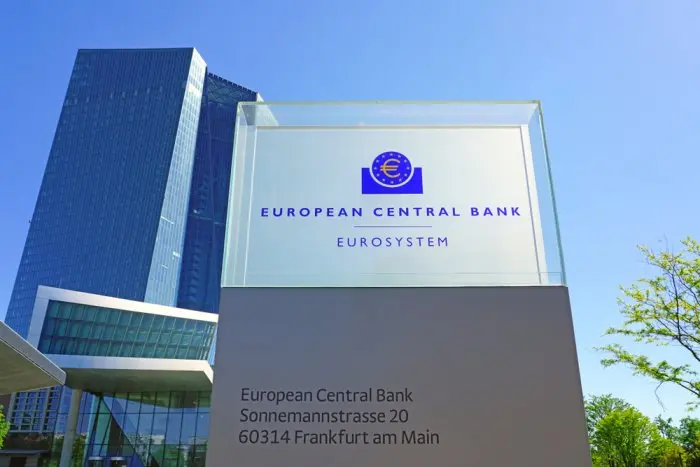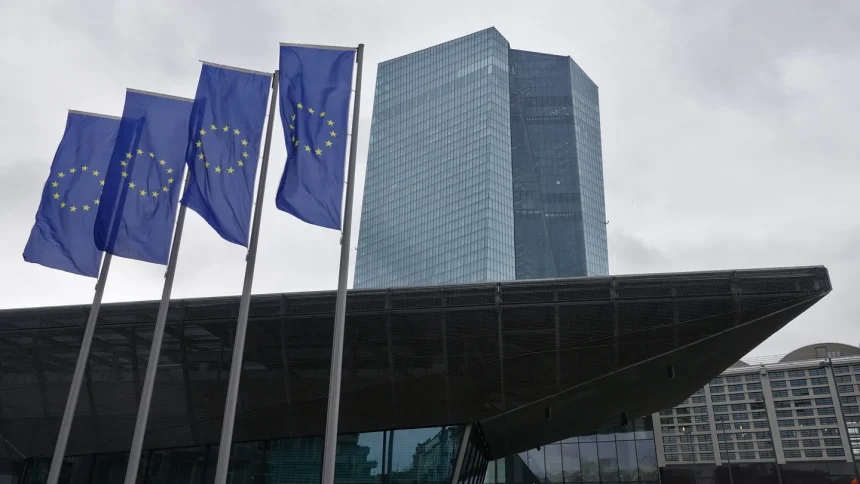LONDON (Reuters) — The European Central Bank (ECB) effected its third interest rate cut of the year on Thursday, highlighting that inflation in the eurozone is increasingly under control while the economic outlook has deteriorated.
This marks the first uninterrupted rate cut in 13 years, signaling a shift in the ECB’s focus from curbing inflation to supporting economic growth, which has lagged behind the U.S. for the past two years.
“The latest data on inflation shows that the disinflationary process is well underway,” the ECB stated, adding that economic indicators have also shown unexpected declines, affecting the inflation outlook.
Recent economic reports, including lower-than-expected inflation for September and weaker business bustle, likely influenced the ECB’s decision to cut rates. The quarter-point reduction brings the deposit rate to 3.25%, with money markets expecting three more cuts by March.
The ECB did not offer strong guidance on future rate moves, instead reiterating that decisions would be made “meeting by meeting” based on incoming data. The Governing Council affirmed its commitment to keeping rates “sufficiently restrictive for as long as necessary.”
Following the declaration, the euro rose slightly, having already been buoyed by signals from ECB officials, including President Christine Lagarde.
Investors will carefully watch Lagarde’s upcoming news conference for clues about the future direction of rates.

Inflation and Growth
The ECB can now claim it has approximately tamed the worst inflation surge in a generation. Prices grew by just 1.7% last month, falling below the ECB’s 2% target for the first time in three years. While inflation might rise somewhat above 2% by year’s end, it is expected to remain close to that level going forward.
Despite wage increases still contributing to “domestic inflation” – the rise in prices for services and goods less dependent on imports – the ECB noted this effect is gradually flagging.
“Domestic inflation remains high, as wages continue to increase at an elevated rate,” the ECB said, but added that labor cost pressures are slowly easing, with company profits helping to alleviate their inflationary impact.
However, the economy has paid a heavy price for monitoring inflation. High interest rates have reduced investment and economic growth, which has been sluggish for nearly two years. Recent data on industrial output and bank lending proposes this trend will continue.
Even the hitherto resilient labor market is starting to falter, with the job vacancy rate declining from record highs. This has increased calls within the ECB to ease monetary policy before further damage is done.
“We now face a new risk: undershooting the inflation target, which could stifle economic growth,” said Portuguese central banker Mario Centeno. “Fewer jobs and reduced investment would add to the sacrifices already made.”
Some of these economic encounters stem from structural issues, such as high energy costs and declining competitiveness in Germany, Europe’s industrial leader. While lower interest rates can provide some relief by making capital cheaper, they are not a solution to these deeper problems.
“We cannot oversee the headwinds to growth,” said ECB board member Isabel Schnabel. “But monetary policy alone cannot resolve structural issues.”


